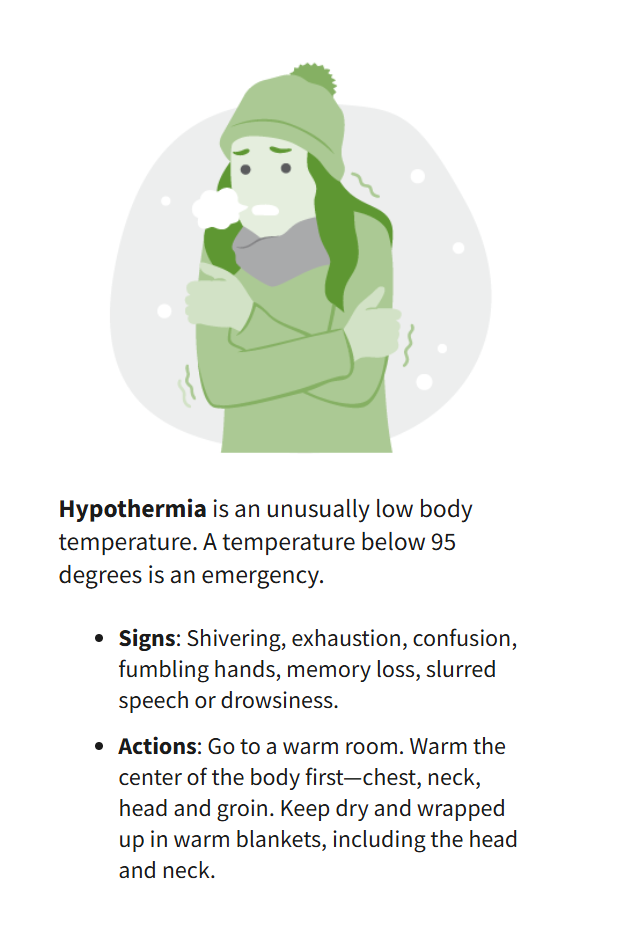MADISON, Wis. (CIVIC MEDIA) – Next week in Wisconsin is a time to prep and plan for cold and snowy conditions, especially as a snow storm sets its sights on us.
Gov. Tony Evers has declared November 18th – 22nd as Winter Weather Awareness Week in Wisconsin. As winter approaches and before colder temperatures set in, now is the perfect time to plan and be prepared for the upcoming season.
Although we’ve seen it before, there are some things to remember. Especially as the state looks at the first snow of the season arriving early next week.
First and foremost when you hit the road in winter weather, go slow and give yourself extra following distance from other cars. The Wisconsin State Patrol says that 9 people were killed and over 2,000 were injured in the state just last winter. Right now is time to get the snow tires on and load the back of the pick-up trucks with some weight.
This weekend, you’ll also want to get the winter emergency kits ready and in your car. Like a flashlight, batteries, blankets, extra gloves, hat, food, water, a shovel and kitty litter or sand. That’s so you throw it down to gain traction if stuck in a snowbank.
Wisconsin experiences an average of three to six winter storms during the season. Last winter, the highest one-day snowfall total in the state was 17 inches in Washington county, in the town of Jackson on January 13th. But last season was slow for snow. In fact, tons of businesses suffered with the lack of it, especially in the Northwoods. So what can we expect for this winter? Well I talked to Matt Friedlein from the National Weather Service…
“A weak La Nina tends to be better to keep it snowing with frequent systems, the Alberta Clipper as we say. So a lot of nickel and dime snow opportunities and more frequent cold air intrusions too.”
Just so you know the NWS also simplified their winter terminology for cold weather events. They took away the wind chill advisories, watches and warning and now are going to be called cold weather alerts. For example ‘Wind Chill Watches’ will now be called an “Extreme Cold Watch”. While what was once known as wind chill warnings, will now go by “Extreme Cold Warnings”.
“What would happen in the old structure was you could have the winds usher in cold air, with wind chill headlines out. But then the winds end and then some of the coldest temps happen in the wake of that and there would be no headlines from us here in the Weather Service, even though it would still be dangerous out. Cold is cold here in the approach to simplification.” explained Friedlein.
The Wisconsin Department of Health Services says that there were 45 cold-related deaths in the state last year. With 861 emergency department visits and 225 hospitalizations in the state from cold-related illnesses. And the temperatures are about to dip. So make sure you know what the signs of frostbite look like.

“It’s being smart and reminding young people or elderly who don’t always remember or have the resources to be able to dress warmly and to ensure that furnaces are working. Allowing the kids to dress warmly when outside which is usually not the first thing on their mind. Because when it gets really cold it doesn’t take long for frostbite to set in. It can be deceptive. Or your car is not working all of a sudden and then you are out in the cold, those types of things are really important to prepare for.” said Friedlein.
This is why we say reduce your time outside, including your pets. Make sure you wear several layers of loose-fitting, lightweight clothing instead of a single heavy layer. Because the last thing you want is to sweat and trigger hypothermia. It can sneak up quickly.

At home, stock up on additional supplies and have a plan for what to do if you lose power. Do you have extra batteries and other alternative power sources like power banks or a generator?
You can call 211 or visit https://211wisconsin.communityos.org/ to find local warming centers and free winter clothing outlets.
Don’t stock up on salt, it’s bad and winds up in our waterways, causing further problems. Using too much salt can also corrode vehicles, hurt animal paws, damage concrete and kill plants.